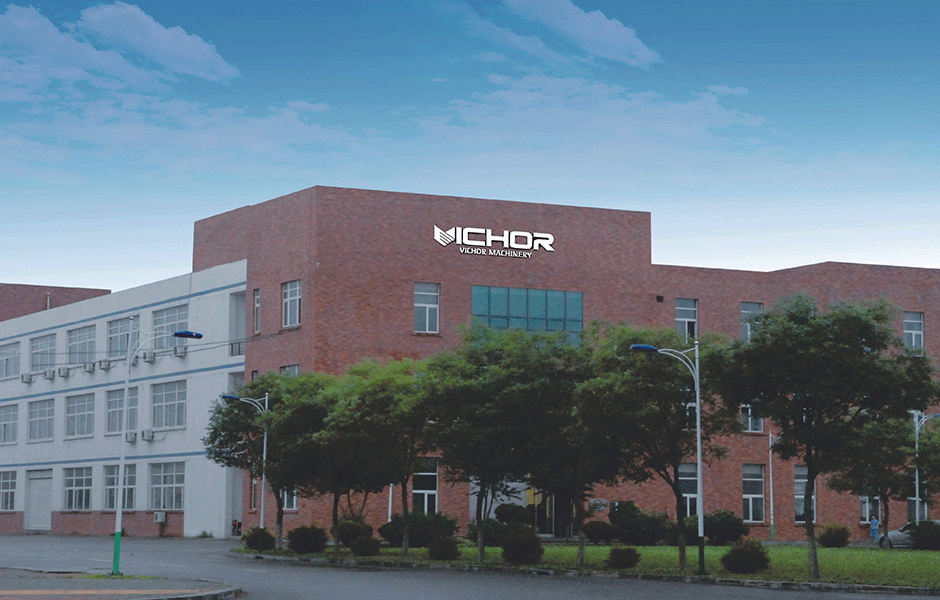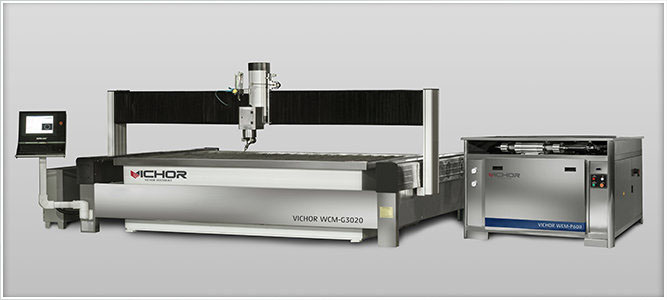In the dynamic world of plastic fabrication, achieving clean, precise, and stress-free cuts across a vast array of materials is paramount. While lasers, saws, and routers each have their place, water jet plastic cutting has emerged as an exceptionally versatile and powerful solution. This technology harnesses the incredible force of ultra-high-pressure water, often augmented with abrasive particles, to slice through plastics with unmatched precision and minimal thermal or mechanical impact. Whether you’re prototyping intricate components, producing complex gaskets, or fabricating large acrylic displays, understanding the capabilities of water jet plastic cutting is crucial for modern manufacturing. This comprehensive guide delves into five key aspects that make this technology indispensable.

1. The Core Technology: How Water Jet Plastic Cutting Works
At its heart, water jet plastic cutting is a remarkably straightforward yet powerful process. It utilizes a high-pressure pump (typically generating pressures between 30,000 PSI and 90,000 PSI) to force water through a tiny orifice, usually made of diamond or sapphire, creating a supersonic stream.
Pure Water Jet Cutting: For softer plastics like foam, rubber, insulation, thin films, and food products, the pure water stream alone is sufficient. The extreme velocity (often exceeding Mach 3) erodes the material through sheer kinetic energy, resulting in clean, burr-free edges with a smooth, satin finish. This method is exceptionally clean and generates no heat-affected zone (HAZ).
Abrasive Water Jet Cutting: To cut harder, thicker, or more robust plastics (acrylic/PMMA, polycarbonate, HDPE, UHMW, PVC, nylon, fiber-reinforced composites), an abrasive material (typically garnet sand) is introduced into the high-velocity water stream just after the orifice, within a specialized mixing chamber. The abrasive particles are accelerated by the water, transforming the stream into an intense erosive tool capable of slicing through virtually any plastic, regardless of its hardness or thickness. The abrasive significantly increases the cutting power and speed for these tougher materials.
The cutting head, guided by sophisticated CNC (Computer Numerical Control) systems, moves precisely according to digital CAD/CAM files, enabling the execution of complex 2D and 3D shapes with high accuracy.
2. Unmatched Material Versatility: Cutting Virtually Any Plastic
One of the most significant advantages of water jet plastic cutting is its extraordinary versatility regarding the types of plastics it can process effectively. Unlike thermal processes (laser, plasma) that can struggle with materials prone to melting, charring, or releasing harmful fumes, or mechanical processes (sawing, routing) that can cause delamination or chipping, the waterjet handles an exceptionally broad spectrum:
Acrylic (PMMA): Produces stunningly clear, polished-looking edges without melting or yellowing, crucial for displays and signage.
Polycarbonate: Cuts without inducing micro-cracks or stress points that thermal processes can create, maintaining its renowned impact strength.
PVC (Rigid & Flexible): Avoids the toxic fumes generated by laser cutting PVC. Handles both rigid sheets and softer vinyls effectively.
Polyethylene (HDPE, LDPE, UHMW): Cleanly cuts these notoriously “gummy” materials that can clog router bits or melt excessively under lasers. Ideal for cutting boards, tanks, and wear strips.
Nylon & Acetal (POM/Delrin): Provides precise cuts without the risk of melting or deforming these engineering thermoplastics.
Foam (PU, PE, EPS): Pure waterjet excels at cutting intricate shapes in various foam densities without crushing or melting, vital for packaging, insulation, and flotation.
Rubber & Elastomers: Cleanly slices through soft or hard rubber without tearing or generating excessive dust.
Fiber-Reinforced Plastics (FRP, G10/Garolite, CFRP): Effectively cuts composites without fraying fibers or causing delamination, a major challenge for other methods.
Laminated Materials: Handles materials like circuit boards (PCBs) with copper layers without de-laminating them.
This unparalleled material compatibility makes the water jet plastic cutting system a true “one-stop shop” for plastic fabricators dealing with diverse project requirements.
3. Precision and Complex Geometry: Achieving Intricate Designs
Water jet plastic cutting is renowned for its exceptional precision and ability to handle intricate geometries that would be difficult, expensive, or impossible with other methods.
High Accuracy and Tight Tolerances: Modern CNC-controlled waterjets routinely achieve positional accuracies of +/- 0.001 to 0.005 inches (0.03mm to 0.13mm) and can hold part tolerances within +/- 0.005 inches (0.13mm), depending on material thickness and type. This precision is vital for functional parts, gaskets, and assemblies.
Minimal Kerf Width: The cutting kerf (the width of material removed by the stream) in abrasive waterjet cutting is typically between 0.030″ to 0.050″ (0.76mm to 1.27mm). While slightly wider than a laser kerf, it is very consistent and predictable, easily compensated for in CAD designs. Pure waterjet kerf is even narrower.
No Heat-Affected Zone (HAZ): Crucially, the cold-cutting nature of the waterjet means there is zero heat input into the plastic. This eliminates:
Melting, warping, or distortion.
Thermal stress buildup that can weaken the material or cause premature failure.
Discoloration or “haloing” around the cut edge.
Changes to the material’s inherent chemical or physical properties.
Unlimited Complexity: The waterjet stream can start cutting from within a pierced hole, enabling the creation of highly complex internal cuts and nested patterns without the need for pre-drilled entry points. Sharp corners, fine details, intricate patterns, and small holes are all achievable. 3D cutting heads further extend capabilities to bevel edges and create complex contours.
This combination makes water jet plastic cutting ideal for prototypes, intricate models, complex gaskets, decorative panels, electrical insulators, and components requiring high dimensional stability.
4. Superior Edge Quality and Finish: Minimizing Post-Processing
The edge quality produced by water jet plastic cutting is a major benefit, often reducing or eliminating the need for secondary finishing operations.
Pure Waterjet Edges: On soft materials, the edge is typically very smooth, with a satin-like finish, often ready for immediate use. No burrs or melt lines are present.
Abrasive Waterjet Edges: On harder plastics, the edge has a uniform, matte, slightly textured finish resulting from the abrasive erosion. While not optically clear like a polished acrylic edge, this finish is consistent and functional. Crucially:
No Burrs: The cutting action typically produces minimal to no burrs, especially compared to routing or sawing.
No Thermal Degradation: The absence of heat means no melted slag, recast layers, or heat-hardened zones that need removal.
Predictable Texture: The texture is consistent and can be desirable for bonding or painting adhesion.
Factors Influencing Edge Finish: The finish can be subtly controlled by adjusting parameters:
Abrasive Type and Size: Finer garnet mesh sizes produce a smoother finish.
Pressure and Traverse Speed: Optimizing speed and pressure minimizes “striations” (waviness) for a cleaner cut. Slower speeds generally yield smoother edges but increase cost.
Cutting Head Technology: Dynamic head control systems that tilt the nozzle slightly in the direction of travel can significantly reduce striations and taper, improving edge squareness and finish, particularly on thicker materials.
Reduced Post-Processing: For many applications, especially non-cosmetic functional parts or where the edge isn’t visible, the as-cut edge from water jet plastic cutting is perfectly acceptable. When a smoother finish is needed (e.g., for visible acrylic edges), the waterjet cut provides an excellent, stress-free starting point for secondary polishing.
5. Environmental and Operational Advantages: A Cleaner, Cooler Process
Beyond its technical capabilities, water jet plastic cutting offers significant environmental and operational benefits:
Environmentally Friendly:
No Hazardous Fumes: Unlike laser cutting or hot knife methods, waterjet cutting plastics does not vaporize the material. It produces no toxic fumes (critical for PVC, composites), smoke, or hazardous airborne particulates associated with melting plastics. Pure waterjet cutting is especially clean.
Minimal Waste: The slurry (water and spent abrasive) generated in abrasive cutting is non-toxic. The abrasive (garnet) is inert and can often be recycled or disposed of in regular landfills. Water can be treated and recycled within closed-loop systems.
No Coolants or Oils: The process uses only water and natural abrasives, eliminating the need for hazardous cutting oils or coolants common in machining.
Operator Safety:
The cold-cutting process eliminates risks associated with high temperatures (burns, fire hazards).
Enclosed cutting chambers and proper safety protocols effectively contain the high-pressure stream and slurry, protecting operators.
Reduced risk of inhaling harmful fumes.
Material Efficiency and Reduced Stress:
The narrow kerf minimizes material waste.
Advanced nesting software maximizes material utilization from sheets.
The absence of heat and mechanical clamping stress prevents part distortion or warping during and after cutting, preserving the integrity of sensitive or thin plastics.
Operational Flexibility: Waterjet systems can cut plastics stacked in multiple layers (within reason), further increasing throughput efficiency for certain parts. They also switch between materials (plastics, metals, stone, composites, glass) with minimal setup time – just change the cutting program and potentially the orifice/nozzle or switch to pure water.
Water jet plastic cutting stands as a remarkably versatile, precise, and environmentally conscious technology for modern plastic fabrication. Its ability to cut virtually any plastic – from delicate foams and rubbers to tough engineering thermoplastics and composites – without inducing heat-related damage is unparalleled. The combination of high precision, intricate cutting capabilities, excellent edge quality, and significant operational advantages makes it an invaluable tool across countless industries, including aerospace, automotive, signage, packaging, medical device manufacturing, electronics, and consumer goods.
Whether the priority is maintaining the optical clarity of acrylic, preserving the impact strength of polycarbonate, cleanly slicing through gummy polyethylene, or avoiding toxic fumes from PVC, water jet plastic cutting delivers a superior solution. As technology advances with improved pump efficiencies, smarter CNC controls, and dynamic head innovations, the capabilities and cost-effectiveness of waterjet for plastic cutting continue to grow, solidifying its position as a cornerstone of advanced manufacturing. For fabricators seeking quality, versatility, and efficiency, investing in water jet plastic cutting technology is a strategic move towards future success.
continue reading
Related Posts
- 1089 words5.5 min read




